
Farming Angora goats for mohair fibre really did not take hold in Australia until the 1970’s though there were significant efforts by Wilson, Kempe and Kidman in the latter part of the 19th Century. Australia opted for the Merino instead.
The goat prefers a scrub habitat and in Turkey, South Africa, Texas and Patagonia the Angora is largely relegated to semi desert areas of low land value but with a considerable supply of labour from indigenous sources.
The industry in Australia began from a different base. Small scale stud farms run by enthusiastic but largely city based hobbyists with little farming experience, experimented with the breed. We had to learn how to farm Angoras.
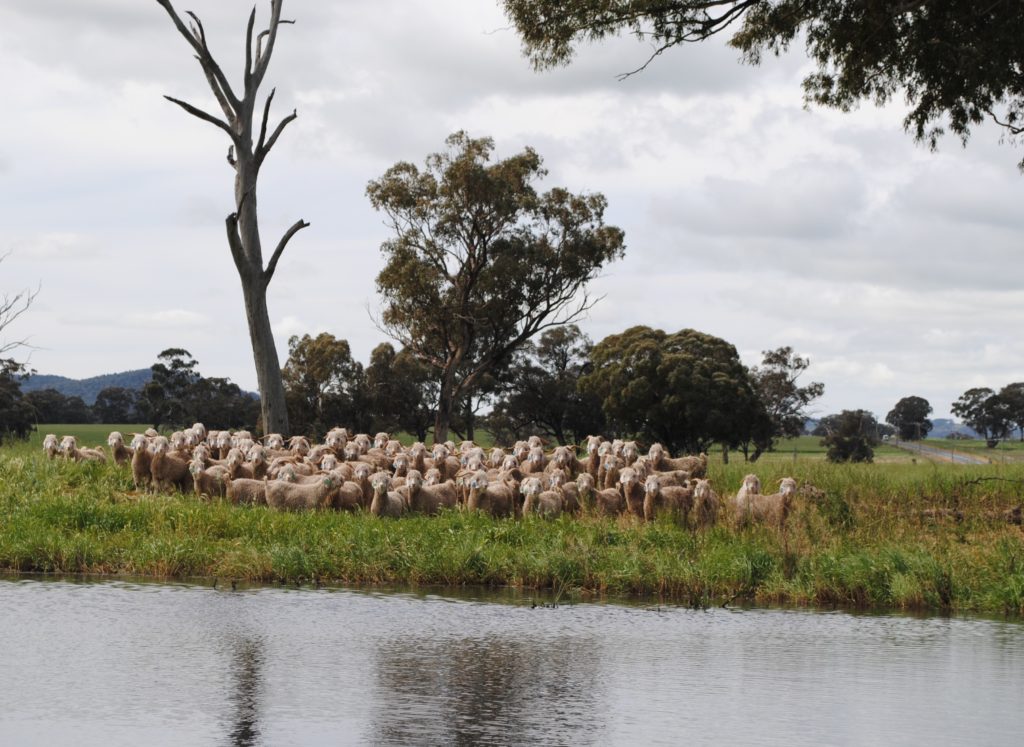
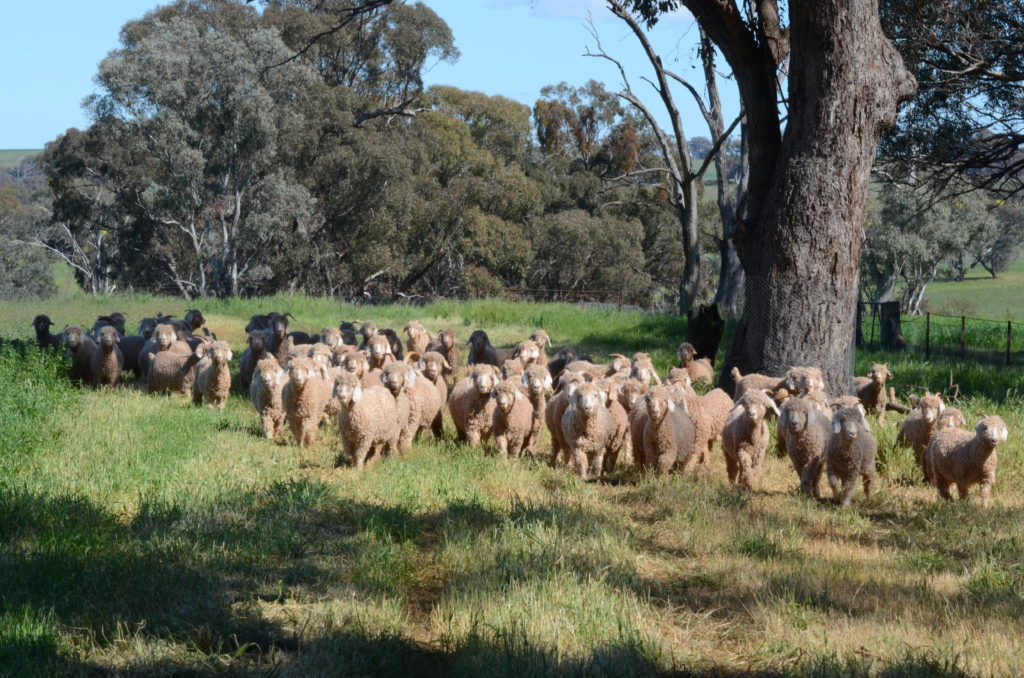
Angoras generally prefer to move in tight mobs. When grazing is scarce they will spread out but when encountering herders, they will again form tight mobs.
The majority of herds are run as stud breeding enterprises. Animals are tattooed in the right ear with a stud brand – usually three letters or numbers. This identifying brand is registered with Mohair Australia. Individuals are identified by unique alphanumeric codes is the left ear. Most Angoras carry an identifying tag and all animals sold must have a tag with a PIC (Property Identity Code) and the sale must be recorded with the NLIS (National Livestock Identification System) administered by MLA.


Here is a change of emphasis copied from South Africa. It appears that one criterion for “purity” is lack of black pigmentation on ears and faces. To go another step, a soft lustrous coverage of short fine fibres also seems to be desirable. But in addition, it is hard to say how completely “naked” ears are viewed. Likewise, it is difficult to determine how brown/tan colouring is viewed and whether straight white skin a is considered superior. Maybe the issue of sun burn on white skin could be an issue.
Just why we are discussing this characteristic should be considered. It is obvious that many (indeed most) animals in the current national flock have black skin spots on the ears and face. When pressed, South Africans equate black pigmentation with “dark fibre” observed during processing. This is undoubtedly a concern and processors have computer-controlled camera equipment to check yarn and remove sections while winding. To what extent there is a correlation between ear spots and dark fibre in yarn is a matter of conjecture.
Of course, the argument for soft, lustrous ear and face coverage is well understood in South Africa as well as in the “weaving mohair” system in Australia. The argument here is a supposed correlation between soft ears and the lack of kemp and medullation in the fleece. Again, there could be some conjecture about this supposed relationship, but it does seem to have some logic.
Here are some examples from animals at NATS. Note that is was not possible to photograph black pigmentation on ears and faces at the NATS so I have added some historical examples from my own flock.
The first photo is an example of extreme pigmentation including a spot with pigmented fibre. The same ear is displayed in the second photo but wet with methylated spirits. The third photo is of an ear clean of black pigmentation (again wet).

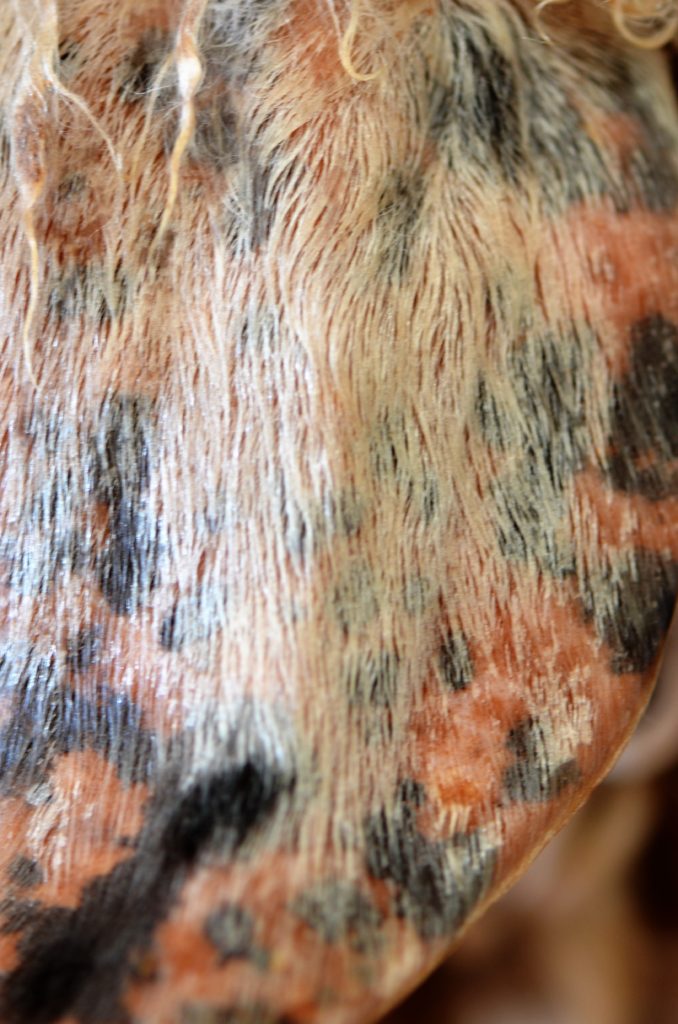
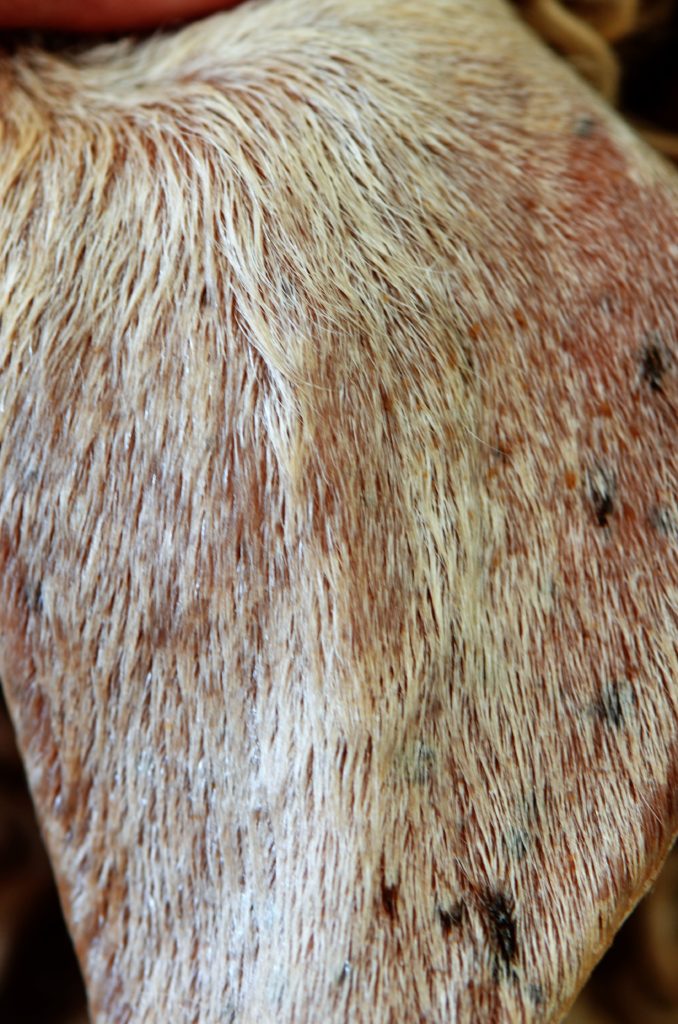
This second set displays brown spotted ear preferred to black pigmentation. The second photo is of a hairy ear – as with muffled face, not preferred. The third photo is of a brown eared buck with a thin black stripe in the horn. The stripe results from a pigmented spot in the germinal layer of the horn.
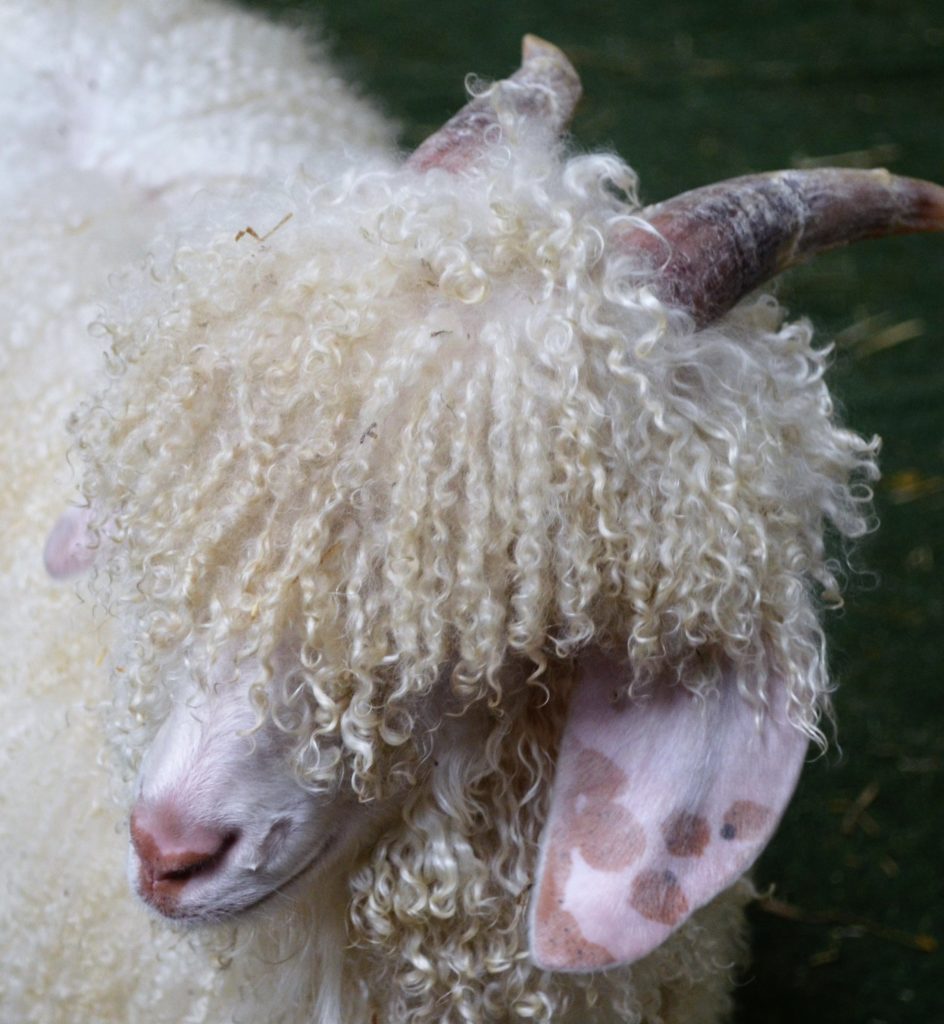
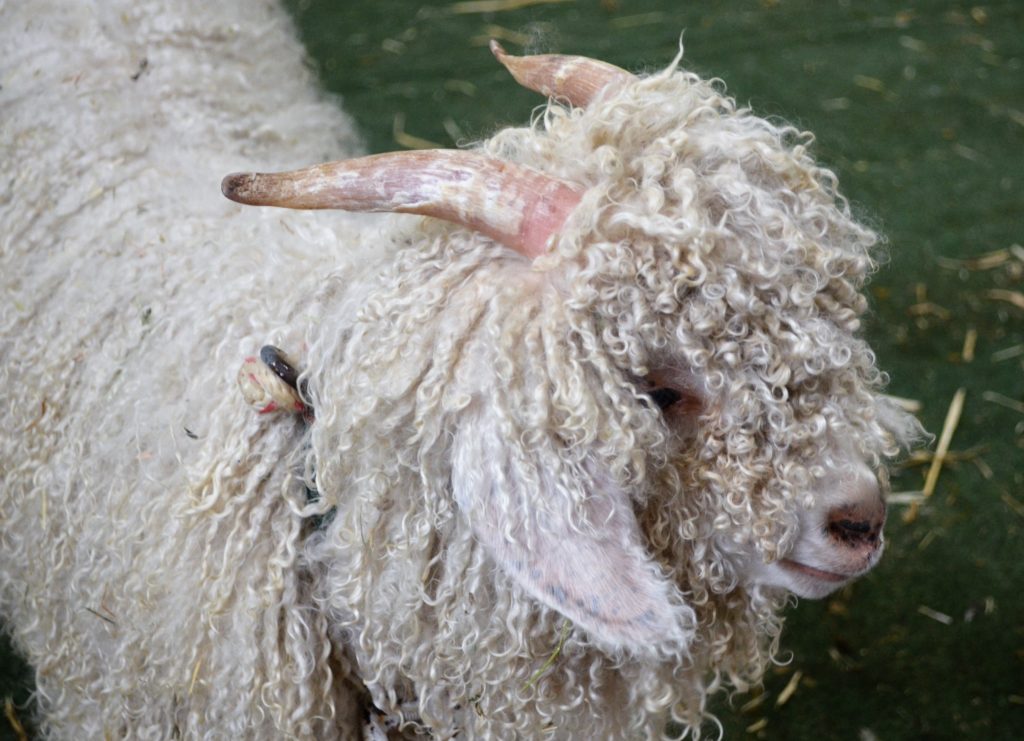

The second and third photos at the top demonstrate how organic liquids like methylated spirits can aid the display of pigmentation. (Note. Organic liquids have similar refractive index to wool and mohair tending to create invisibility in solid fibres but emphasise medullation. This is referred to as the “kerosene test”. The use of kerosene is dangerous since it contains benzene which is carcinogenic. Here methylated spirits is used for safety.)
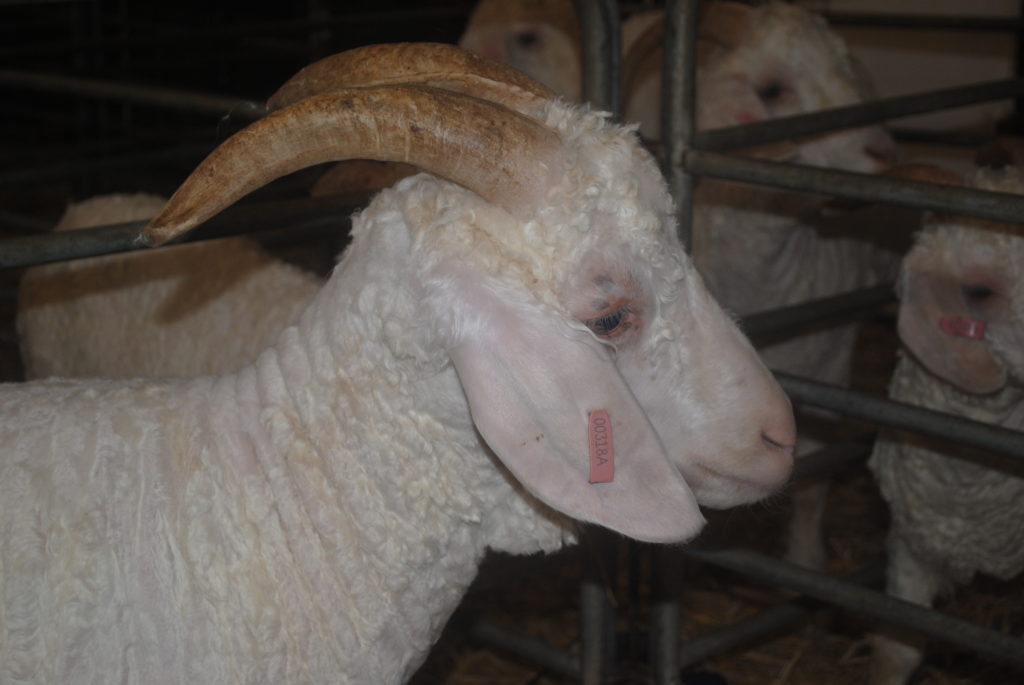
A brief history Beginning in Turkey…

The goat was probably one of the first animals to be domesticated in Asia, almost 9000 years ago. Angora goats are believed to have originated in the Himalaya Mountains of Asia. They found their way to Turkey, where the name Angora was taken from Ankara, the name of the area where the goats were first bred. The breed’s silky coat yields the mohair fibre. The Angora had been imported into Europe by the mid-18th century, but not until the animal was successfully established in South Africa and western USA century later, did the Western mohair industry develop.
…. and then in Australia.
Angora goats were first imported into Australia in 1832 and 1833. They came from M Polonceau’s stud in France to the property of the Riley family of Raby N.S.W. Pure bred Angoras were imported from Turkey in subsequent years up to 1873, to properties in New South Wales, Victoria, and later South Australia. Other states followed and there were importations from South Africa in 1873 and from USA between 1890 and 1910. This is the foundation from which our Australian Angora goat has evolved up until 1992

There were a few Angora goat breeders in Australia before the 1900’s, but by 1950 all interest in Angoras had gone. Mr F W Barton, who began his Banksia flock in Victoria in 1904, was the only breeder to continue. He kept the breed pure to the original importations, untainted by the blood of feral or dairy goats. He registered as a stud in 1947 with the Goat Breed Society of Australia (GBS) and his son, Mr Fred Barton (pictured) continued to farm angoras until his death in 2003. Because Mr Barton (Snr) was the only Angora stud registered in Australia for many years, it become the foundation of the Australian Angora Stud industry with most stud animals up until the 1970’s being able to find a ‘Banksia’ animal somewhere in the background of their breeding. )
By 1963 fourteen Angora studs were registered with the Goat Breeders Society. From the late 1960’s interest in Angora Goats grew dramatically, fostered, no doubt, by the “back to nature movement” and the development of hobby farming.
Cross breeding.
It was estimated that Australia had no more than 2000 Angora goats in 1970 time but as interest grew, back crossing to milk and feral does began and numbers increased rapidly. The back crossing resulted in light cutting animals and a considerable amount of kempy or medullated fibres appearing in the mohair. It was accepted that 5 generations of “back crossing” were necessary before animals could be considered “pure”. While third cross animals appeared similar to “purebreds”, kemp remained a problem and fleece shedding was often seen in spring.
At the time there were two breed organisations who adopted different terms for cross-bred animals. First cross animals were referred to as G4’s or Appendix D’s and females moved up the system with each cross to Registered bucks. Progeny of G1’s or Appendix A’s could be registered as “purebreds” in the “numbered” sections of the Herd Books. Because of the high value of animals (and the fact that most Angoras were registered) breeders stuck closely to the registration system and this created some problems in supplying certificates. Eventually the two Herd Books were computerised and merged. Later, in 2000, the registration system was taken “on line”. In 2005 the system was reinvented “in house” with the addition of on-line editing, transfers and a Performance Recording module. By this time many breeders had opted for “on farm” recording and had ceased registering animals with Mohair Australia but an animal registration process exists for members of Mohair Australia Ltd to this day.
Importations.

In 1983 the Australian Quarantine and Inspection Service (AQIS) successfully negotiated an importation of Angora goats and some sheep from the USA. Some 17 syndicates purchased 74 Angoras from Texan studs and these reached Australia in 1984. These animals were characterised by low kemp levels, very greasy fleeces and often dense and flat locked fleeces. The threat of Scrapie was considered high and all animals had to produce at least 6 progeny and they had to reach 5 years of age before any animals could be released from quarantine. The animals were finally held on 2 quarantine stations in South Australia and Victoria and were bred to Australian does. Some 3000 animals were released in 1992 and rapidly dominated the Australian breed. Even in the first cross Texan-Australian animals fleece weights doubled and kemp disappeared. However, growth rates were often poor and there were many small and poor animals in the higher Texan crosses. Texan animals produced fleeces of as much as 5Kg in weight and had a yield of about 80% or lower.
In the late 1980’s two initiatives achieved success in importing embryos from Africa. These came from Zimbabwe, one via New Zealand (African Goat Flocks and others) and the second direct to a quarantine station in South Australia (ABM’s Terraweena animals). The animals produced exhibited some of the strong South African characteristics of fast growth, large frames, freedom from kemp and good fleece style in adults. Fleece weights were of the order of 3 to 4 kg with a yield of about 85%.
Many breeders used these “South African” Angoras over Texan and Texan cross animals thus improving growth rate and conformation while reducing grease content. Faster growth rate unfortunately resulted in stronger (coarser) “kid” fleeces.
The modern Australian Angora.

In recent years there have been another three small introduction of South African embryos and some semen has also been imported from Texas. The export ban was relaxed in South Africa and these introductions from there were from named studs. The Australian industry moved very quickly to replace the old Australian strain with first Texan and then African strains. The trend more recently has been to move towards the South African types though some Texan material is still present. In effect, the Australian Angora is now a mix of Texan and South African breeding. Because of the varying mix and the amount of subsequent selection, it is perhaps no longer justified to think in terms of importations. The animals we have now are mainly the result of breeding in Australia.
Farming Angora Goats
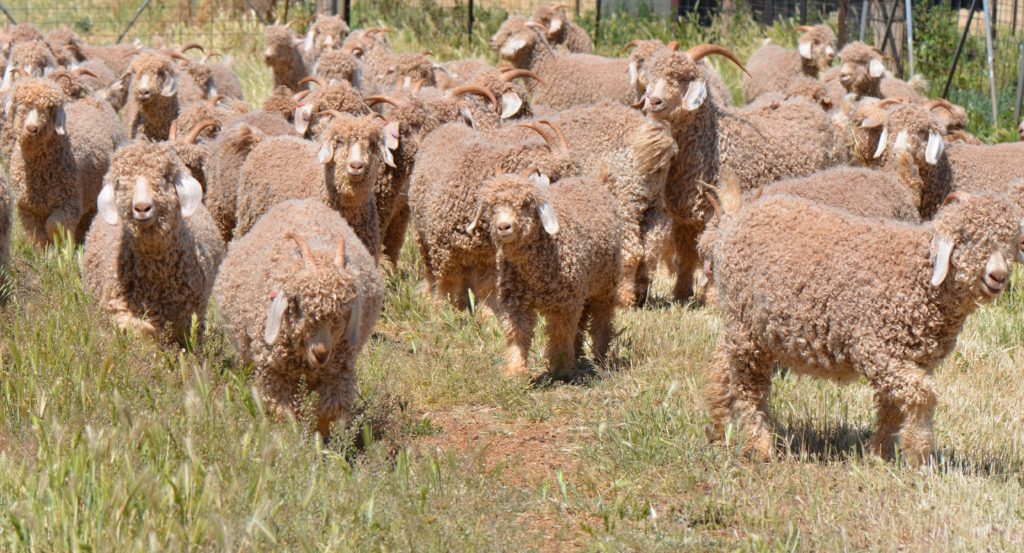
Much of the following material is take from the recently published MOHAIR: Farming the Diamond Fibre (2017) written by Dr Doug Stapleton a long term worker and farmer who, with his father Max, began Cudal Mohair Stud in 1972 and played a significant role in the establishment of the mohair industry. Max and Doug were central to the establishment of mohair marketing in Australia. The stud ran as many as 1,100 Angoras and the National Mohair Pool offered some 63 consecutive mohair auctions of as much as 73tonnes 2 to 3 times a year from 1980 to 2009.

Chapter 2 of the book is published here as a pdf file. CLICK HERE This is a contemporary summary of farming technology.
A Modern History 1970 – 2017
Chapter 3 of the MOHAIR: Farming the Diamond Fibre is published here as a pdf file. This is a contemporary view of the industry from 1970 but it should be read as a personal account from the perspective of the author who was intimately involved from that time. There may well be other points of view. CLICK HERE